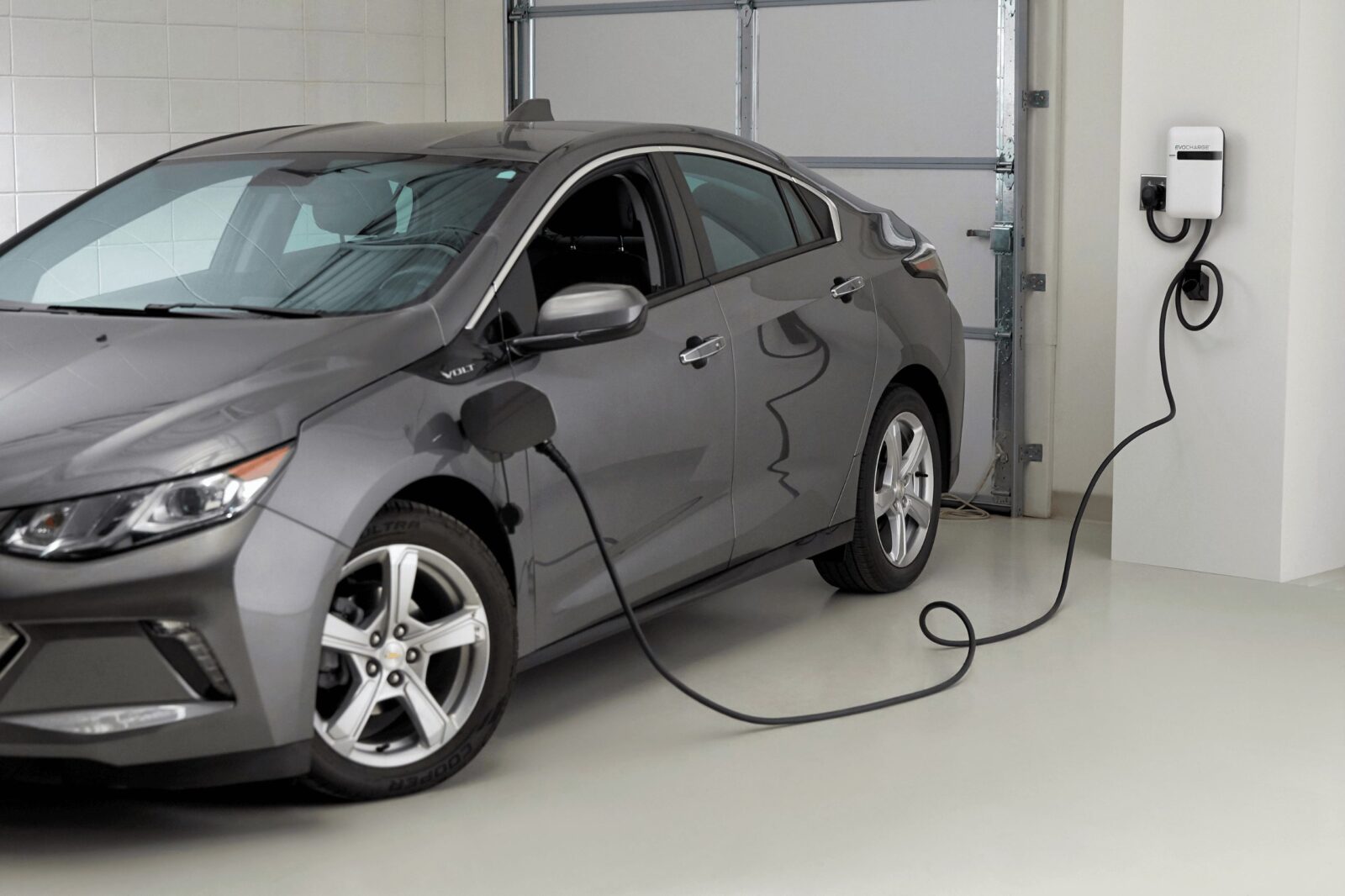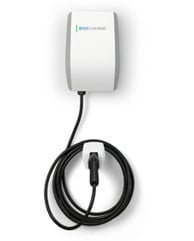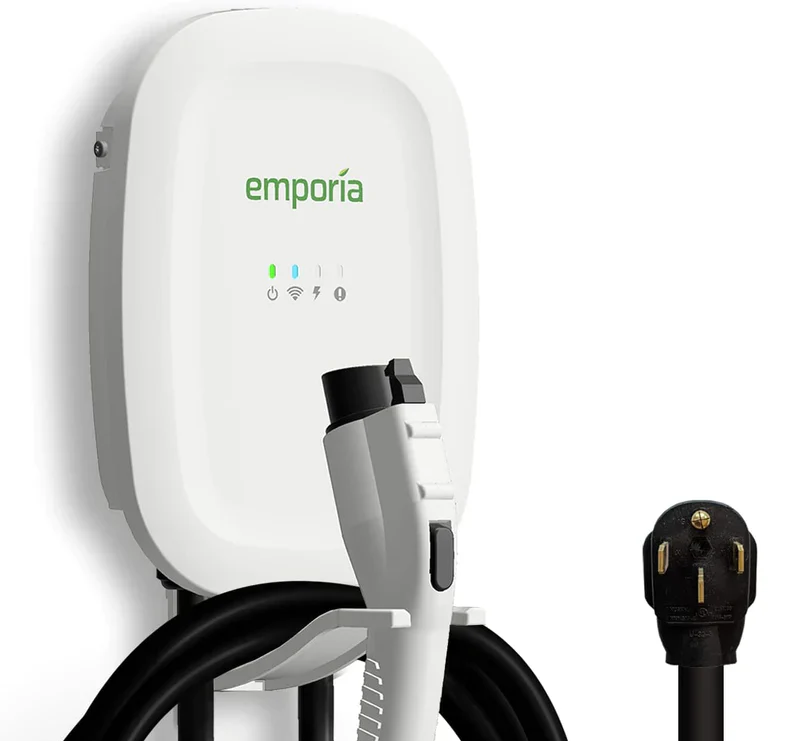Shopping for an EV charger doesn’t have to be overwhelming. Break it down: 32 amps, 40 amps, 48 amps—what’s the real difference? It all comes down to power, speed, and whether your home can support it.
What Are Amps and Why Do They Matter?
When it comes to EV charging, “amps” (short for amperes) measure the strength of the electrical current flowing into your vehicle. The higher the amperage, the faster your EV battery charges—assuming your car and home electrical system can handle it. Think of it like filling a bucket with water: a 32-amp charger is like using a garden hose, while a 48-amp charger is more like a pressure washer. Both will fill the bucket, but one gets the job done significantly faster.
However, faster isn’t always better—especially if your home’s electrical panel can’t support the demand. Pushing too many amps through a circuit that’s not equipped for it can cause tripped breakers or even damage your electrical system. That’s why it’s important to choose a charger that matches your EV’s capabilities and your home’s electrical infrastructure.
Here’s a comparison of the three most common home charger amp ratings:
- 32 Amp Charger: Slower charge, good for plug-in hybrids or overnight use. Needs a 40 amp circuit. Lower cost, easier install.
- 40 Amp Charger: A solid middle ground. More range per hour. Requires a 50 amp circuit.
- 48 Amp Charger: Fastest home charging. Adds up to 45 miles of range per hour. Requires a 70 amp circuit and may need an electrical panel upgrade.
Choosing the right amperage isn’t just about speed—it’s also about safety, efficiency, and making sure your setup is sustainable long-term. If you’re unsure about your home’s capacity or which charger fits best, consult a licensed electrician or refer to the Department of Energy’s EV charging resources for guidance.
Match Your EV’s Intake Capacity
Before investing in a home EV charger, it’s essential to understand how much power your vehicle can actually accept. Every electric vehicle (EV) has an onboard charger with a maximum current limit. This determines how much electricity the car can draw from a home charging station at any given time.
For example, many plug-in hybrid electric vehicles (PHEVs) are designed with smaller batteries and typically cap out at 16–32 amps. That means even if you install a 48-amp charging station, the vehicle will only draw up to 32 amps—charging speed won’t increase beyond what the onboard charger allows. On the other hand, fully electric vehicles (BEVs)—like Teslas, the Mustang Mach-E, or Hyundai IONIQ 5—often support higher intake levels, up to 48 amps or more, especially in newer models.
If you’re unsure of your vehicle’s maximum charging capacity, you can find this information in:
- Your EV owner’s manual
- The manufacturer’s website or spec sheet
- EV-specific databases like PlugShare or AFDC’s vehicle search tool
Understanding your EV’s limits ensures you don’t overspend on a higher-amp charger your vehicle can’t take full advantage of. It also helps you size your home’s electrical infrastructure appropriately. If you’re considering upgrading to a future EV, choosing a higher-amp charger like the Emporia Level 2 EV Charger (48 amps) can provide extra capacity without requiring additional upgrades later.
Emporia 48 Amp Smart Charger
The Emporia level 2 EV charger rates extremely well in almost all quality standards that define an excellent level 2 EV charger. Whether it’s cost and value, power and weatherproof, construction and durability, or simply just the smart features it offers.
Is a 48-Amp EV Charger Worth It?
Whether a 48-amp charger is worth the investment comes down to your driving habits, daily schedule, and future plans. For many EV owners who plug in overnight and aren’t in a rush, a 32-amp charger provides sufficient range by morning—especially for plug-in hybrids or shorter daily commutes.
However, if you have shorter charging windows, drive long distances, or anticipate upgrading to a second EV or a newer model with a larger battery, a higher-amp charger—particularly in the 40- to 48-amp range—offers key advantages:
- Faster Charging: A 48-amp charger can deliver up to ~45 miles of range per hour, depending on the vehicle. That’s a big time-saver if you need to “top off” quickly during the day or after getting home late.
- Future-Proofing: As battery sizes increase and new EV models support faster onboard charging, a 48-amp station ensures your setup won’t become obsolete in a few years.
- Greater Scheduling Flexibility: With faster speeds, you can take advantage of shorter off-peak electricity windows or charge multiple vehicles in one night.
One excellent option in this category is the Emporia Level 2 EV Charger (48 amps). It’s designed to deliver fast, efficient charging while offering adjustable amperage (down to 16 amps), which makes it compatible with a wide range of home electrical panels. Its smart energy monitoring, Wi-Fi app integration, and load management features give homeowners the tools to optimize charging times, track energy use, and even participate in utility demand response programs where available.
Emporia 48 Amp Smart Charger
The Emporia level 2 EV charger rates extremely well in almost all quality standards that define an excellent level 2 EV charger. Whether it’s cost and value, power and weatherproof, construction and durability, or simply just the smart features it offers.
So, is a 48-amp charger worth it? If you're planning for long-term EV ownership—or want faster, smarter charging without frequent electrical upgrades—then yes, it’s one of the most practical investments you can make.
How Many Amps Does Your EV Actually Need?
Not every EV accepts the same charging input. Many plug-in hybrids cap out at 32 amps. Fully electric vehicles vary. Some accept no more than 7.7 kW of input (around 32 amps). Others can handle more, which makes a 40 or 50 amp charger worthwhile.

Planning Your EV Charger Installation: What to Know Before You Buy
Before selecting a Level 2 EV charger, it’s important to understand what your home’s electrical system can safely support. A bit of upfront planning can save you from unexpected costs and ensure your charger performs safely and efficiently.
1. Assess Your Electrical Panel Capacity
Start by locating your home's main electrical panel—typically rated for 100, 148, or 200 amps total. Most modern homes can support a Level 2 EV charger, but if your panel is already loaded with high-demand appliances (like HVAC systems, electric ranges, or dryers), you may be pushing its limits. You’ll need enough capacity to add a new 40- to 70-amp circuit without overloading the system.
2. Understand Circuit Requirements
- A 32-amp charger typically requires a 40-amp breaker.
- A 40-amp charger needs a 50-amp breaker.
- A 48-amp charger (like the Emporia Level 2 EV Charger) usually requires a 60-amp breaker to operate safely.
If your existing panel can’t accommodate a charger with this demand, you may need a subpanel or even a service upgrade to increase total amperage capacity. This adds to installation cost but allows room for future high-load devices like a second EV charger or solar system.
3. Always Hire a Licensed Electrician
Installing a Level 2 charger isn’t a DIY task. A licensed electrician will:
- Conduct a load calculation to assess available capacity.
- Ensure proper circuit sizing and wiring.
- Pull necessary permits to meet local code requirements.
- Safely install the charger in line with National Electrical Code (NEC) guidelines.
Some jurisdictions require inspection and permitting before energizing the charger, so having a qualified professional is not only safer—it’s often legally required.
4. Use Trusted Resources
To learn more about what goes into a home EV charger installation, check out the U.S. Department of Energy’s Home Charging Installation Guide. It covers essential safety tips, charger types, and how to evaluate your home’s readiness.
Proper planning ensures that your EV charging setup is not just powerful, but safe, scalable, and built to last.
Final Take
Choose a charger that aligns with both your car’s capability and your home’s electrical limits. For most households, a 40–48 A charger hits the sweet spot—fast, efficient, and future-ready. The Emporia Level 2 EV Charger (48 amps) delivers on all fronts: powerful charging, smart features, and scalable performance.
Emporia 48 Amp Smart Charger
The Emporia level 2 EV charger rates extremely well in almost all quality standards that define an excellent level 2 EV charger. Whether it’s cost and value, power and weatherproof, construction and durability, or simply just the smart features it offers.





